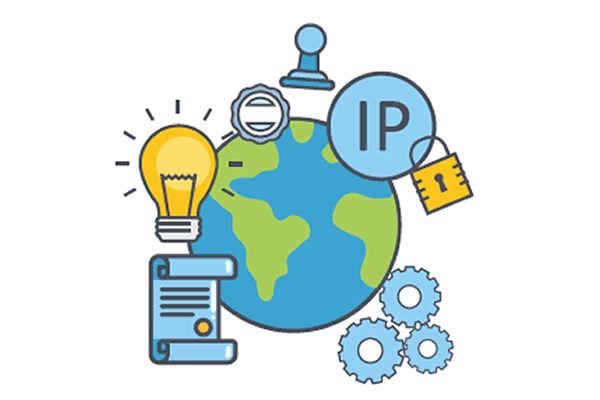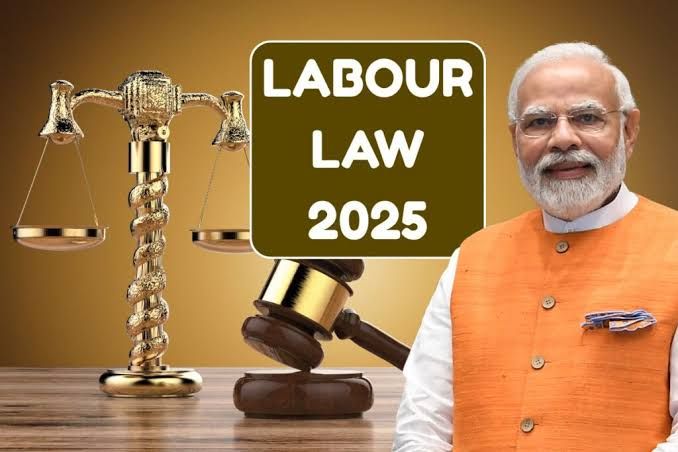IPR IN THE DIGITAL ERA

Author: Chaitrali Naik, student at National Law University, Delhi.
Intellectual Property Rights (IPR) are legal safeguards granted to individuals or entities for their creative or inventive works. These exclusive rights, encompassing patents, copyrights, trademarks, and trade secrets, empower creators to control the use of their intellectual creations, thereby fostering innovation. Patents provide inventors with exclusive rights to their inventions for around 20 years, while copyrights protect original works of authorship for a specified duration. Trademarks safeguard symbols and names, enabling consumers to identify the source of goods or services. Additionally, trade secrets involve confidential business information that offers a competitive advantage. In India, IPR protection is vital for stimulating innovation, economic growth, and cultural development, with laws such as the Patents Act, Copyright Act, and Trademarks Act in place to regulate and uphold these rights. Enforcement of these laws is crucial for maintaining a fair and competitive environment for creators, inventors, and businesses.
What is Intellectual Property and Intellectual Property Rights (IP & IPR)?
- Intellectual Property (IP) refers to unique creations of the mind, such as inventions; artistic works; designs; and symbols, names, and images which are used in commerce.
- The definition of intellectual property rights is any rights associated with intangible assets owned by a person or company and protected against use without consent. Intangible assets can be referred to as non-physical property, which also include the right of ownership in intellectual property.
Example of IPR:
- Patents
- Domain names
- Industrial design
- Confidential information
- Inventions
- Moral rights
- Database rights
- Works of authorship
- Service marks
- Logos
- Trademarks
- Design rights
- Business or trade names
- Commercial secrets
- Computer software
Evolution Of IPR:
The concept of protecting intellectual creations can be traced back to ancient civilizations, but the formal development of modern intellectual property laws began in the 17th century. Here’s a brief overview of the historical background of IPR:
- The Statute of Monopolies (1624):
- A crucial turning point in the evolution of intellectual property law occurred with the enactment of the Statute of Monopolies in England in 1624.
- The Statute of Anne (1710):
- In 1710 the Parliament of Great Britain passed an act (c.21 or as 8 Ann. c. 19) which was first copyright regulated by the Government and Court
- Industrial Revolution and Patent System:
- The Industrial Revolution brought many technological changes due to which more formalized methods were introduced to protect industrial invention. The patent system provides the fundamental institutional foundation of the Industrial Revolution.
- Internationalization of Intellectual Property Protection:
- As global trade expanded, the need for international standards in intellectual property protection became evident. 1883 saw the signing of the Paris Convention for the Protection of Industrial Property.
- 20th Century Developments:
- The 20th century saw the establishment of major international organizations dedicated to intellectual property, such as the World Intellectual Property Organization (WIPO) in 1967. Agreement on Trade-Related Aspects of Intellectual Property Rights (TRIPS), was adopted to harmonize intellectual property laws globally.
- Digital Age Challenges:
- With the advent of the digital age, new challenges emerged for intellectual property protection, especially in the realms of copyright and patents. The Internet and digital technologies have necessitated ongoing adjustments to intellectual property laws to address issues like online piracy and digital rights management.
About Digital IPR:
Intellectual Property in digital format. Businesses create, handle, and store some type of Digital Intellectual Property, like photos, software, databases, video, audio, and many more. All these are used by businesses for marketing products, launching new brands, and company secret formulas, and coding. These are the Digital Assets.
- Detailed Explanation of “Digital Asset”:
It’s a blanket term to cover everything that a company, person, or other holds their own right in the form of digital format.
- Software
- Original Music
- Photographs
- Drawing
- Film and Video
- Websites
- Graphics
- Copyright Publication
DRM, Digital Rights Management technologies ensure copyright by protecting the content, controlling access to the work, and ensuring safe payment for access. DRM didn’t allow the illegal user to access and your date is protected by the username and password, licensing agreement.
Another way to protect digital intellectual property is through Technical Protection Measures. It allows publishing companies to secure and protect content such as music, video, and text from unauthorized users.
In today’s digital era along with trademarks, patents, and copyrights, digital tools are also introduced to safeguard digital intellectual property such as Cryptography, Digital Watermark Technology, Digital Signature Technology, Electronic Marking, and Security Features of Operating Systems.
Detailed info on all the tools is as follows:
- Cryptography: It is the oldest mechanism employed to ensure the security and privacy of information over the network, involving encrypted information that is unable to be read, only a legitimate user can decrypt and read the information.
- Digital Watermark Technology: A Digital watermark, just similar to TV logo, inserted in digital document with certain pattern or signs, which show the relevant details of ownership or copyright permission. This is mostly used in multi-media world. The legal owner can remove the watermark with proper algorithm.
- Digital Signature Technology: This are mostly used for digital product, and it includes sender/receiver date, day, time, identity, and unique codes, marking and sometime binding software for specific customer. Digitally signed fingerprints make sure that data is authentic and prevent unauthorized copying.
- Electronic Marking: System automatically generate unique mark which tagged on every document copy. Used to protect copyright as well as electronic publishing where documents are printed.
- Security Features of Operating System: Windows 2000 Professional, Windows 2000 Server, and MS-SQL Server operating systems incorporate unique security and integrity features for safeguarding files and data.
Digital IPR Review:
Digital intellectual property protection methods, like encoding, encryption, and watermarking, have enhanced security against infringement. Software owners may use unique registration keys for legitimate users. Music and film publishers employ content scrambling to deter unauthorized copying. Despite these measures, the complete elimination of copyright infringement remains impossible.
- Business Software Alliances: The trade association for the software industry and its hardware partners aims to safeguard software producers’ intellectual property rights, enforce copyright legislation, and promote compliance among software users.
- UK Interactive Entertainment Association (UKIE): Formerly known as the Entertainment and Leisure Software Publishers Association, it is the trade association representing the UK creative games and interactive entertainment sector. Its focus includes safeguarding members’ interests and preventing copyright theft and piracy.
- Alliance for Intellectual Property: A UK-based coalition comprising associations and enforcement organizations collaborates to safeguard intellectual property rights across various business sectors. Members include representatives from audiovisual, music, video game, and software industries, as well as publishers, authors, retailers, and designers.
Legal Challenges by IPR in Digital Realm:
- The Digital era poses a significant challenge due to the ease of reproduction and distribution of digital content. The biggest challenge in the digital era is piracy, in which unauthorized users reproduce or distribute copyrighted work. The ease with of the internet the content can be copied and sent all over the network and this can be seen mostly in places like movies, songs, and software companies.
- The challenge of jurisdiction arises due to the internet’s global reach, making it tough to enforce intellectual property rights across diverse legal frameworks. Varying laws and regulations in different countries complicate legal actions against intellectual property infringement across regions for content creators and owners.
Case Studies and Best Practices:
A. Successful IPR Enforcement Strategies:
- Highlighting cases where digital platforms effectively address IPR infringement can serve as valuable examples.
- Best practices for implementing IPR protection measures in digital environments should be shared and promoted.
HOW TO SECURE IPR:
The legislative framework for securing IPR is as follows:
1. Contract Act, 1872
2. The Trade Marks Act, & (Amendment) 1999, 2002
4. Copyright Act, 1957 & (Amendment) 1994, 1999,2012
5. The Patents Act, 1970 & (Amendment) 2005,2006
5. The Designs Act, 2000, 2008
6. Plant Breeder Right, 2001
7. Geographical Indications of Goods (Registration and Protection) Act, 1999, 2002
Conclusion:
As we know the IPR safe guard the latest invention, ideas, plans, formulas, artistic works, literary work and many more. But as the world started to develop the technology and digital world started growing. As IPR was protect the intellectual property of tangible assets, through digital world the digital property started emerging. To ensure the safety of those digital intellectual property, the new right and new method were introduced by the WIPRO. The along with patent, and trademark digital watermark came to picture. Cryptography, Digital watermark, digital signature, and many more were used to ensure the safety of the digital asset. But in this digital world IPR has to be more update about online piracy, misuse of music, video and other photos. So, till the date the world government has to face problem of hacking and piracy, but many step are taken to avoid all this. Due to all this now a days company has also started new placement position for cyber security.
Sources:
A short history of the evolution of intellectual property rights



